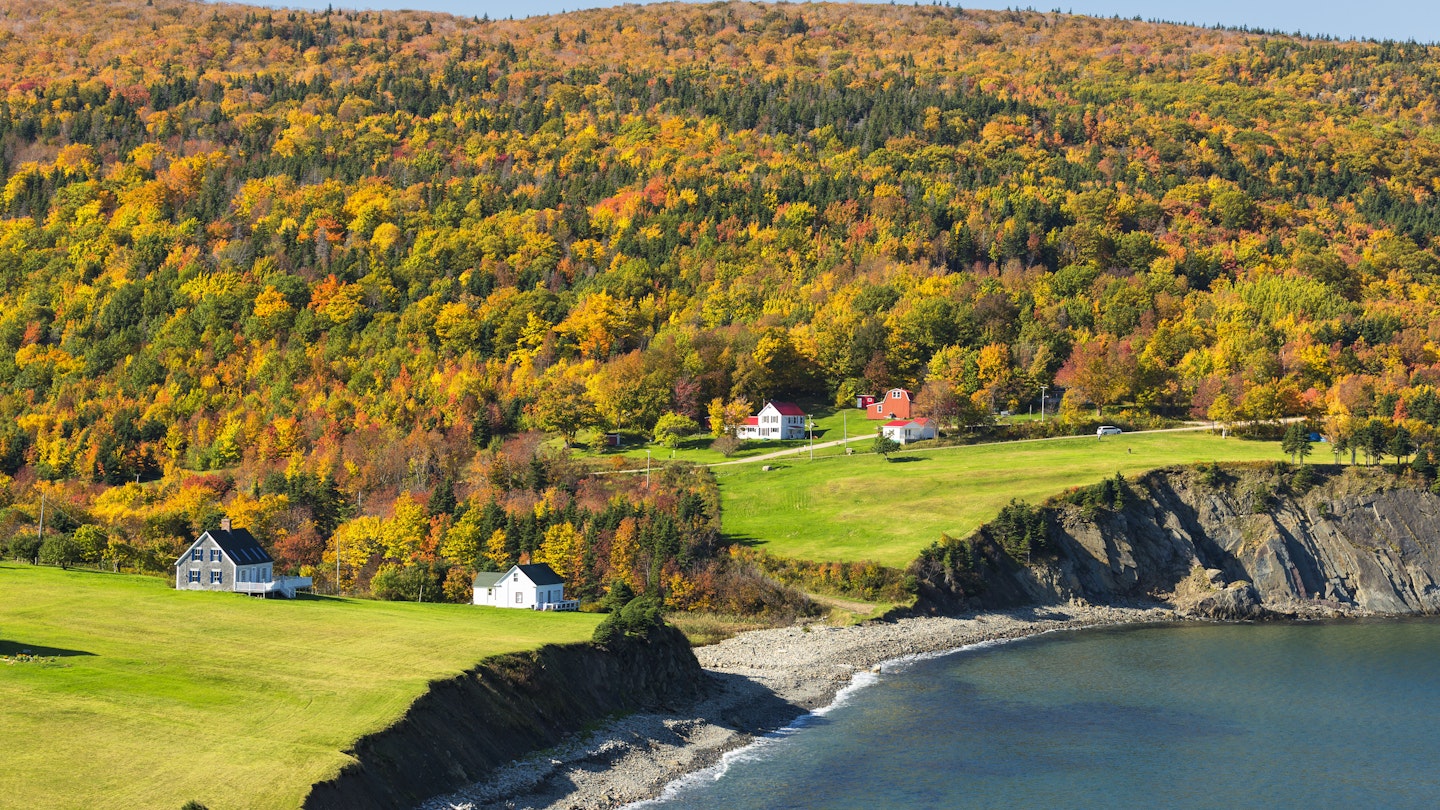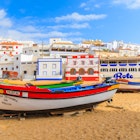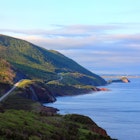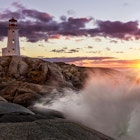Fall foliage or balmy beaches? Festive fiddles or high-brow plays? Tight budget or money to burn? Your decision about when to visit Nova Scotia depends on your tastes, finances and flexibility.
Summer is busy and pricey, but not as expensive or crowded as other parts of Canada. Winter is the cheapest period, but often cold and snowy. Spring and fall are the dark horse seasons with bargains to be found and still plenty to do. Here's a helpful planner to make sure you get the most out of your trip to Canada’s multi-flavored Maritime province.
Read more: When to visit Canada
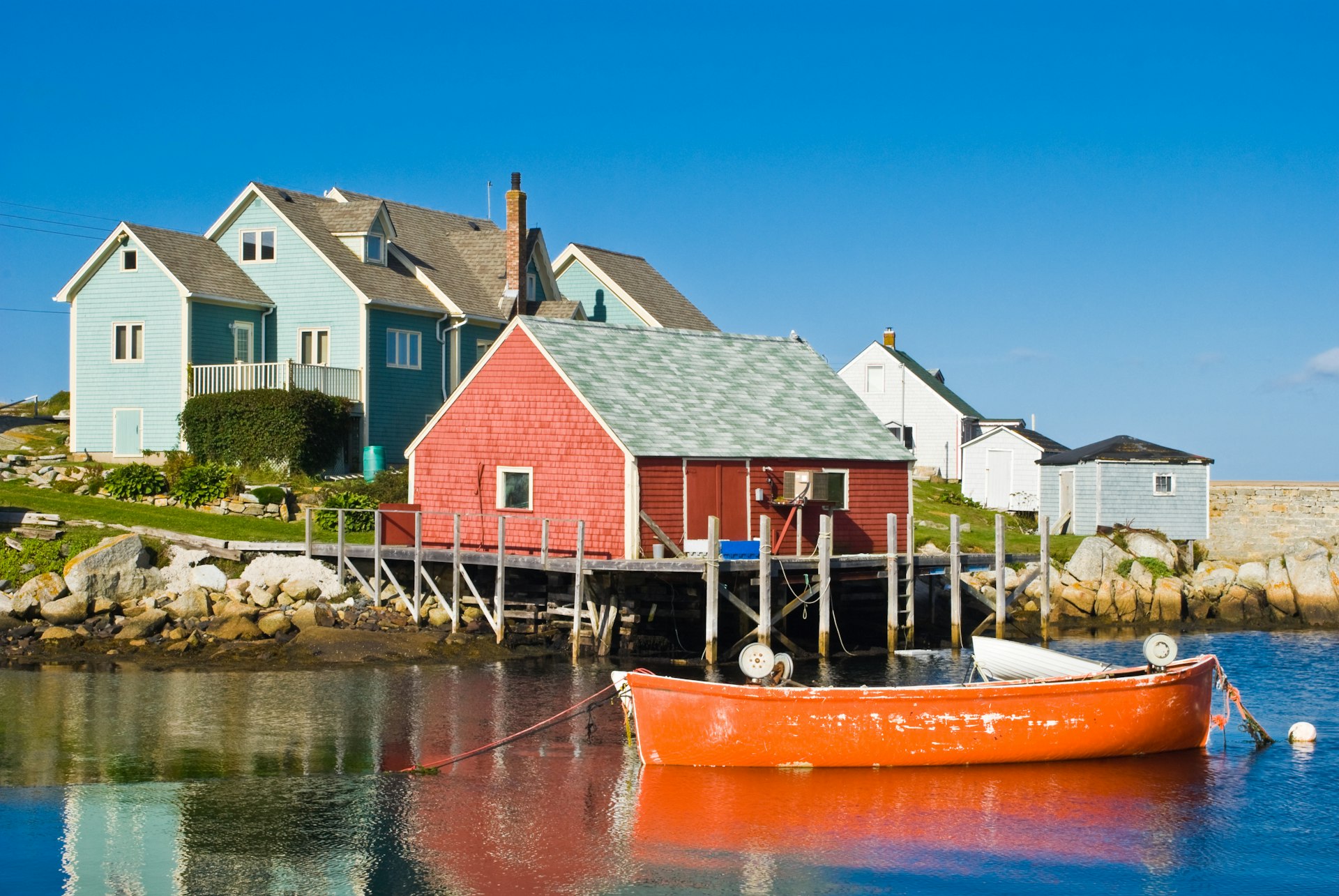
High season: July and August
Best time for beaches and festivals
You won’t be alone in selecting summer as the ideal season for a sojourn to Nova Scotia. July and August welcome around 750,000 visitors. This is also when 80% of the annual festivals and events are crammed into two hyperactive months. Yet, while warm weather and long sunny days mean busier highways and slower travel times, this isn’t Paris. Nova Scotian crowds are rarely asphyxiating. Nevertheless, it’s wise to book ahead for accommodation and car rental (there’s been a province-wide shortage of cars since the pandemic) and set out early if you want to find a decent parking spot at the beach.
Nova Scotia is a province that proudly exhibits a fascinating potpourri of subcultures from the foot-tapping Scottish Ceilidhs of Cape Breton Island to the energetic fiddlers of the Acadian Shores. Not surprisingly, most of these festivities are stuffed into July and August. You can ricochet from one to the other but, for the more popular happenings, it’s best to pre-plan a selective itinerary.
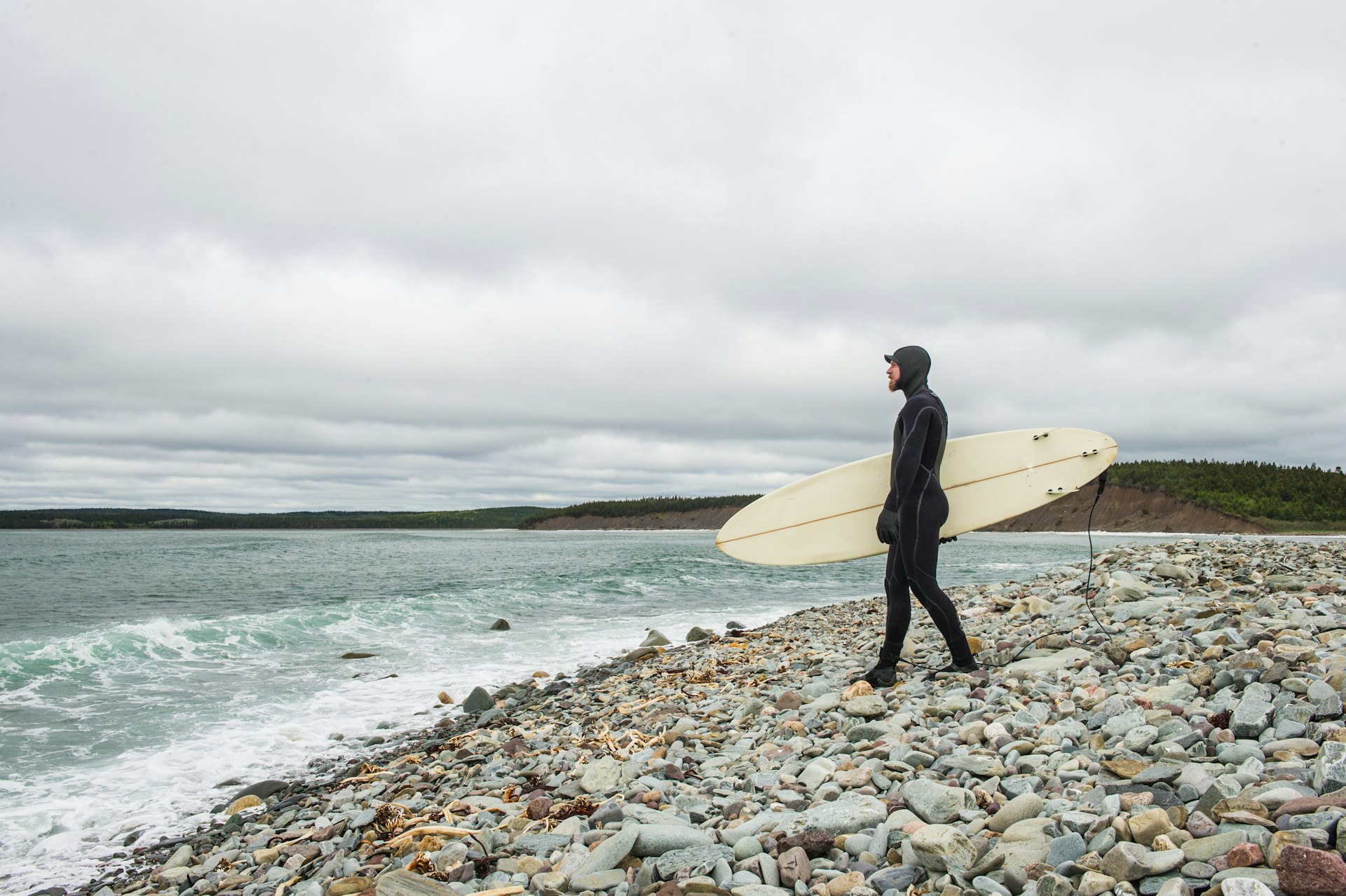
Shoulder season: May, June, September and October
Best time for hiking and surfing
Fall has shorter opening times and some seasonal closures. But lower prices, less mosquitoes and a vivid array of autumnal foliage lure the budget-minded.
September to early October is prime hiking season in Kejimkujik National Park and the best time to visit Cape Breton Island when the area's roads are quieter, and the forests light up with color. It’s also when you’re almost certain to hear live music drifting temptingly out of pubs and bars, especially during the Celtic Colours Festival in October.
Spring can bring morning fog to coastal regions, particularly on the Eastern Shore, although the worst of the mist usually clears by late morning. Wildflowers start blooming in May when apple blossom lights up the Annapolis Valley. Average temperatures jump from 10ºC (50ºF) in late April to 20ºC (70ºF) in mid-June.
Read more: 9 stunning beaches in Nova Scotia
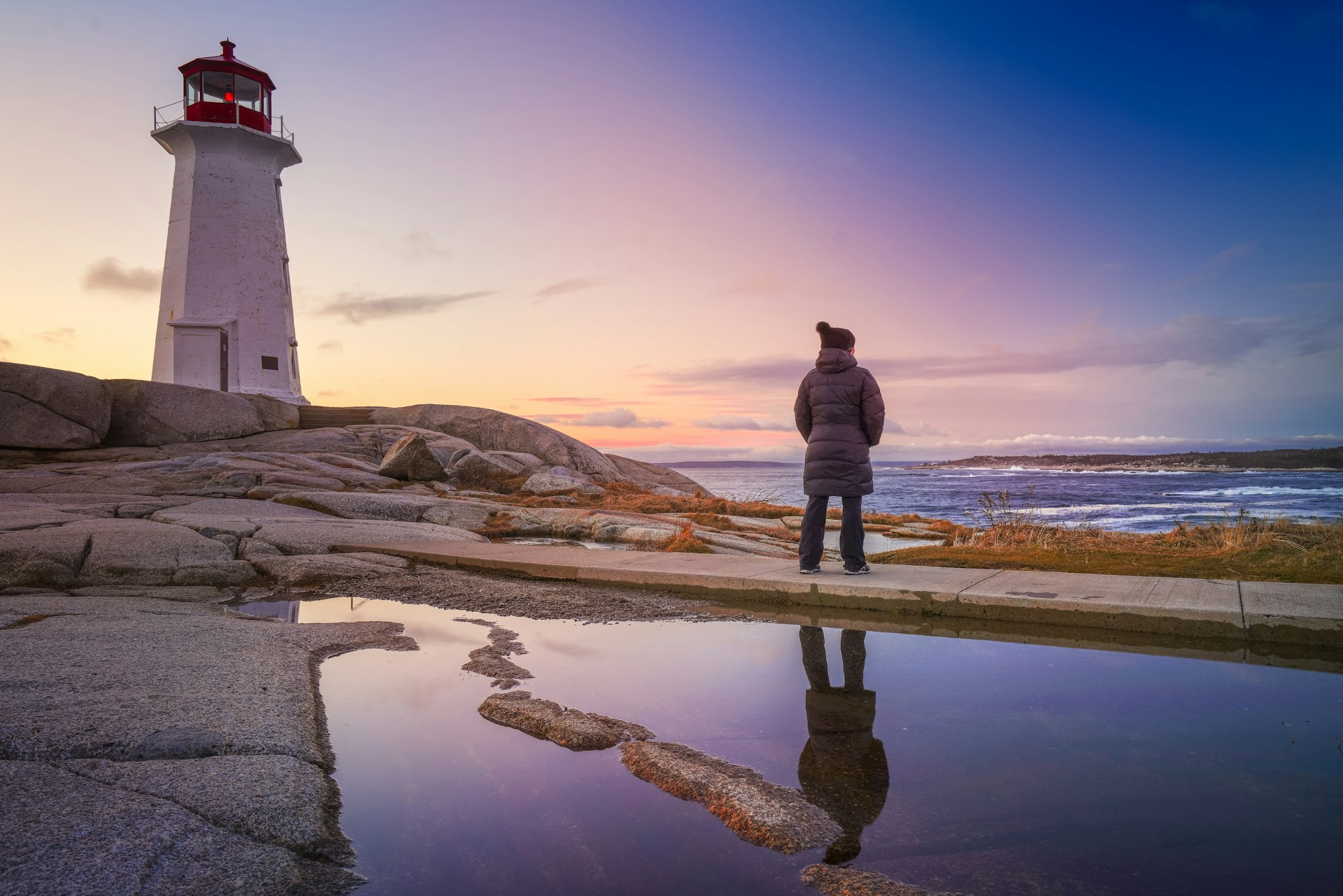
Low season: November to April
Best time for budget-seekers
In common with the rest of Canada, winter in Nova Scotia is characterized by snow, ice and frigid temperatures ranging from -15ºC to 5ºC (5ºC to 41ºF). Lacking the ski infrastructure of British Columbia and Alberta, and the top-drawer metro attractions of Ontario and Quebec, this isn’t the best time to visit. One upside of the season is the low pricing, which might swing the budget-minded. As darkness and cold envelop the countryside, driving can be fraught with challenges and few lodgings and attractions outside the big cities remain open.
Christmas festivals liven things up in late December and early January with Halifax offering a plethora of indoor attractions and warm pubs, but out-of-province visitors mainly stay away.

January
January is the cruelest month – and the coldest, with temperatures lingering in the sub-zeros as lakes freeze and snow piles up.
February
Not a popular month to visit unless you’re looking for deep snow and hard ice. The saving grace? It’s peak lobster season on the South Shore with gastronomic happenings sizzling everywhere from Lunenburg to Liverpool.
Key events: South Shore Lobster Crawl, Nova Scotia Icewine Festival
March
Temperatures still struggle to climb above zero in the early part of the month, especially in Cape Breton Island. Spring break marks the first major annual holiday.
April
Mid-Lent, usually in March or April, is marked in the Acadian town of Chéticamp on Cape Breton Island with a festival of masks and disguises.
Key events: Mi-Carême

May
Flowers bloom, temperatures rise and concerts and art shows arrive in the Annapolis Valley. An increasing number of summer attractions open after Victoria Day (the last Monday preceding May 25th).
Key events: Annapolis Valley Apple Blossom Festival
June
Weather can be sunny but with the brisk bite of spring still lingering in the air. Tourist attractions continue to oil their creaky doors and breaching whales can often be seen in the Bay of Fundy.
Key events: Privateer Days

July
Summer starts to heat up, days are long and festivals bring music and food to the streets. Outdoor activities hit full throttle. Hiking trails are open but beware of mosquitoes. Crowds are less frenzied in the earlier part of the month.
Key events: Antigonish Highland Games, Halifax Jazz Festival, Stan Rogers Folk Festival
August
It’s the peak of the peak. Sun, song and a sultry summer mood descends over Nova Scotia. Beaches welcome sun-bathers, musicians of all ilk rosin their bows and you can pretty much hop from town to town taking in a full gamut of summer festivals. If you long to swim in the chilly Atlantic, this is the time to do it.
Key events: Halifax Busker Festival, Festival Acadien, Digby Scallop Days

September
The dying embers of the Atlantic hurricane season brush the Nova Scotian coast providing ideal conditions for surfing on the Eastern Shore. The cultural calendar revs up especially in Halifax which hosts an international film festival and a 10-day theatre festival focusing on offbeat and experimental plays and sketches.
Key events: Atlantic International Film Festival, Canadian Deep Roots Festival
October
Fall creeps in. As the world turns from green to red, gold and brown, temperatures start to drop and nature-watchers enjoy a marked seasonal metamorphosis. Canadian Thanksgiving in early October inspires local warmth and hospitality while a handful of festivals wrap up the annual calendar.
Key events: Halifax Pop Explosion, Celtic Colours
November
The wettest month with temperatures starting to drop and the festival season drawing to a close. This is not a particularly popular time to visit.
December
Snow starts to fall, and tourist numbers remain low. This is the least expensive month to visit. Christmas showcases local tree-lighting, religious events, and markets.
You might also like:
How to get around in Canada
When to visit Canada
The 14 best road trips in Canada

